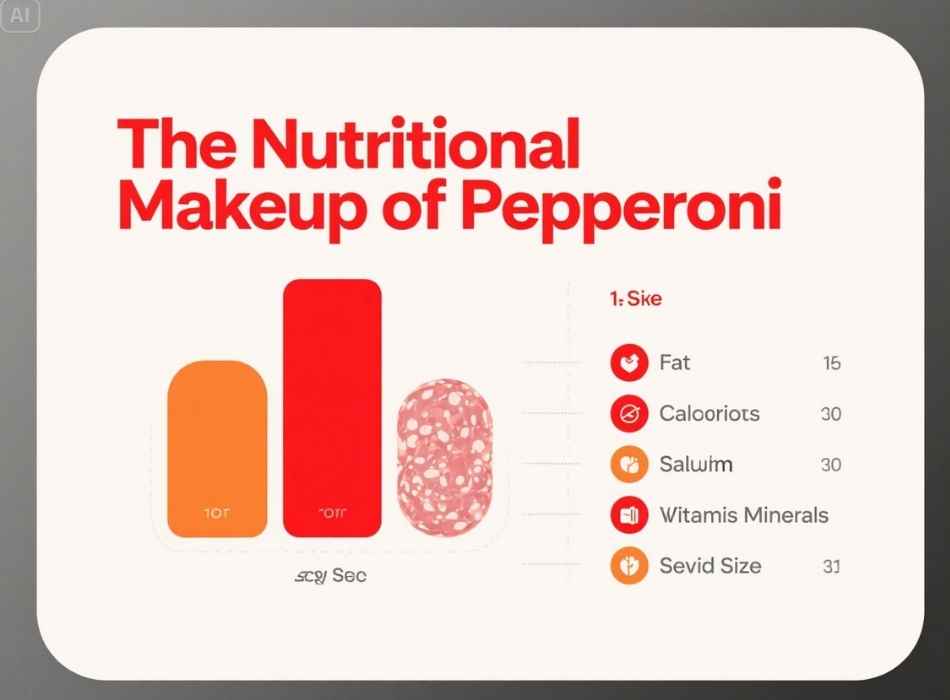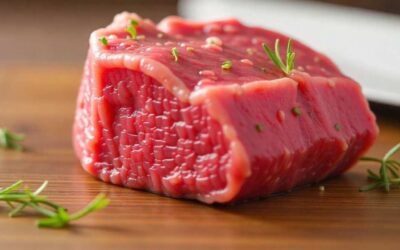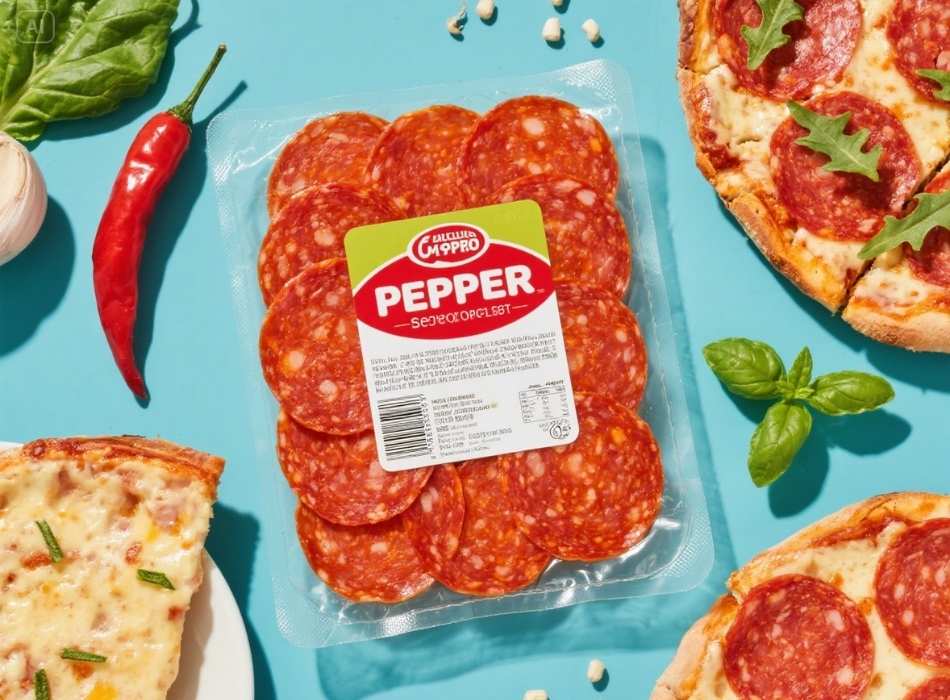Pepperoni is one of the most beloved pizza toppings, instantly recognizable for its spicy flavour and satisfying crunch when cooked. But have you ever wondered if pepperoni is good for you? With its bold taste and convenience, this processed meat is a popular choice, but there’s more to consider when considering its impact on health.
This blog will explore pepperoni’s nutritional value, its pros and cons, and whether it can fit into a balanced diet. Whether you’re a pizza enthusiast or just curious about what you’re eating, we’ve got the answers you need.
What Is Pepperoni?
Before digging into its nutritional profile, let’s start with what pepperoni is. Pepperoni is a cured sausage typically made from pork and beef, seasoned with paprika, chilli powder, and garlic. The meat is cured, fermented, and then air-dried to create its signature flavour and texture. While best known as a pizza topping, pepperoni is popular in sandwiches, pasta dishes, and charcuterie boards.
But how does this fan-favourite food fare when it comes to health? To answer that, we need to examine its nutritional breakdown.
The Nutritional Makeup of Pepperoni

Like many processed meats, pepperoni offers both nutrients and drawbacks. Here’s a quick summary of its nutritional highlights (based on a standard 1-ounce serving):
- Calories: Approximately 140 calories
- Protein: Around 5-6 grams
- Fat: Roughly 13 grams (including 5 grams of saturated fat)
- Carbohydrates: About 1 gram
- Sodium: Roughly 500 milligrams
- Iron: Approximately 6% of the daily recommended intake
- Vitamin B12: Around 10% of the daily recommended intake
While pepperoni contains a decent amount of protein and essential nutrients like iron and vitamin B12, it also has high sodium and saturated fat levels. Therefore, moderation is key in incorporating this popular pizza topping into your diet.
Health Concerns Surrounding Pepperoni
As with processed meat, some potential health concerns are associated with consuming too much pepperoni.
High Sodium Content
One primary concern is pepperoni’s high sodium content. The standard serving size provides nearly one-third of the recommended daily sodium intake, which can be problematic for those with high blood pressure or other heart-related issues.
Saturated Fat
Pepperoni also contains a significant amount of saturated fat, which is known to increase cholesterol levels and contribute to heart disease. Moderation is essential when incorporating this popular pizza topping into your diet.
Alternatives to Pepperoni

For those looking to reduce their intake of pepperoni, some alternatives still provide a similar flavour profile without the same health concerns.
Turkey Pepperoni
Turkey pepperoni is an excellent alternative for those looking to limit their sodium and saturated fat intake. Compared to traditional pork pepperoni, it typically contains less than half the amount of each.
Now, let’s unpack what these numbers mean for your diet.
The Pros of Eating Pepperoni
When eaten in moderation, pepperoni does have some benefits:
1. Rich Source of Protein
Pepperoni provides 5-6 grams of protein per ounce, making it a convenient protein source for meat lovers. Protein is essential for building and repairing tissues, supporting immune function, and keeping you full.
2. High in Flavour
Pepperoni’s bold taste comes from its seasoning and curing process. A small amount can enhance the flavour of your meals, so you don’t need to overuse it to enjoy its taste.
3. Contains Vitamins and Minerals
Pepperoni is a source of specific vitamins and minerals, including B vitamins (such as B12 and niacin), which support energy production and brain health. It also contains zinc and iron, essential for immune function and oxygen transport in the blood. Additionally, pepperoni contains small amounts of calcium, potassium, and magnesium, which are necessary to maintain strong bones and muscles.
4. Versatile Ingredient

Pepperoni is delicious on pizza and can be used in various dishes. It can be thinly sliced and added to sandwiches, salads, pasta dishes, or omelettes for an extra kick of flavour. You can also crumble it over soups or casseroles for added texture and taste. The options are endless when it comes to incorporating pepperoni into your cooking.
5. Long Shelf Life
One reason pepperoni is a popular pizza topping is its long shelf life. It can be stored in the refrigerator for up to six weeks or frozen for longer storage. This makes it a convenient and cost-effective ingredient to have on hand for quick and easy meals.
6. Amp Up Your Snack Game
Pepperoni slices are a great snack option, whether on the go or lounging at home. They are bite-sized, packed with flavour, and require no prep time, making them perfect for satisfying cravings anytime.
7. Easy Party Appetiser
Pepperoni can be a handy appetizer for hosting a party or having guests. Pairing pepperoni with cheese, crackers, olives, and other snacks creates a quick and impressive charcuterie board. It’s a crowd-pleasing option that requires minimal effort.
8. Versatile Ingredient for Any Dish
Pepperoni is not limited to pizzas—it can be used in various dishes to add flavour and texture. Dice it up and add it to salads or pasta dishes, use it as a topping for sandwiches or wraps, or even incorporate it into casseroles and savoury pies.
The Cons of Eating Pepperoni

On the flip side, there are significant health concerns associated with pepperoni:
1. High Saturated Fat Content
With roughly 5 grams of saturated fat per ounce, pepperoni can quickly increase your daily intake. Diets high in saturated fat may raise cholesterol levels and increase the risk of heart disease over time.
2. Loaded with Sodium
One serving of pepperoni contains around 500 milligrams of sodium, over 20% of the recommended daily limit for most adults. High sodium intake is linked to elevated blood pressure, a risk factor for heart disease and stroke.
3. Processed Meat Concerns
Pepperoni falls into the processed meats category, which has been associated with certain health risks. Studies have found links between high consumption of processed meats and an increased risk of certain cancers, particularly colorectal cancer.
4. Additives and Preservatives
Many types of pepperoni contain nitrates and nitrites, preservatives that maintain shelf life and enhance colour. While these compounds are generally safe in small amounts, excessive consumption has been linked to potential health risks. Studies have found that high intake of nitrates and nitrites may increase the risk of certain cancers, such as stomach cancer and thyroid cancer.
Can Pepperoni Fit Into a Healthy Diet?

The good news is that you don’t have to give up pepperoni entirely if you enjoy it. Moderation and mindful eating are key to including it in a balanced diet. Here are some strategies to enjoy pepperoni without overindulging:
1. Limit Portion Sizes
Instead of covering your pizza with layers of pepperoni, use it to accent other toppings. A few slices can add plenty of flavour without overloading on fat or sodium.
2. Pair It With Healthier Ingredients
Balance out the indulgence by pairing pepperoni with nutrient-dense foods. For instance:
- Add vegetables like mushrooms, bell peppers, and spinach to your pizza.
- Use whole-grain crusts or low-fat cheeses when making homemade dishes.
3. Choose Higher-Quality Pepperoni
Look for brands that use fewer preservatives and more natural ingredients. Some artisan or organic varieties may have lower levels of additives and sodium.
4. Try Alternatives
If you want a healthier option, consider turkey or chicken pepperoni. These alternatives often have less fat and calories than the traditional pork-beef blend.
5. Enjoy It Occasionally
Given its high sodium and saturated fat content, pepperoni is best reserved for special occasions rather than an everyday staple. Treating it as an indulgence rather than a dietary norm can help mitigate potential health risks.
6. Get Creative
Pepperoni is a versatile ingredient that can add flavour and texture to various dishes. Instead of solely using it as a pizza topping, try incorporating it into omelettes, salads, or sandwiches for a twist on classic recipes.
7. Take Note of Portions
When enjoying pepperoni, be mindful of portion sizes. Due to its small size and high salt content, it’s easy to overindulge in this tasty meat. Moderation is key to maintaining a balanced diet.
Is There a Healthier Way to Satisfy Your Cravings?
If you’re looking for an alternative way to enjoy similar flavours, consider experimenting with spices like smoked paprika or chilli flakes. These seasonings can mimic the smoky, spicy notes of pepperoni without the accompanying fat and sodium.
Plant-based pepperoni made from ingredients like soy or seitan is becoming more widely available. These options cater to vegetarians and can be lower in fat and sodium while still satisfying your craving.
Final Thoughts on Pepperoni and Health
Pepperoni can be a tasty addition to your meals but has downsides. While it provides protein and flavour, its high levels of saturated fat, sodium, and additives mean it’s best enjoyed in moderation. Smaller portions and healthier pairings are the way for those prioritizing health while indulging in pepperoni.
Balance is key. Whether you’re a die-hard pepperoni fan or simply curious about its place in your diet, being mindful of what you eat is the first step toward making healthier choices.



















